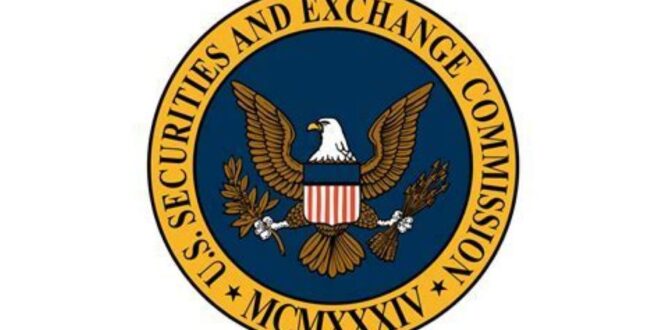In the evolving landscape of cryptocurrency and decentralized finance (DeFi), Miner Extractable Value (MEV) has emerged as a critical topic of discussion. As regulators like the U.S. Securities and Exchange Commission (SEC) begin to examine and regulate the crypto market more closely, one prominent player in the crypto space, Paradigm, has sent a clear message: when addressing MEV, “First, Do No Harm.”
This statement reflects the delicate balance needed when crafting regulatory frameworks for innovative technologies like blockchain and DeFi. While MEV presents potential risks to market integrity, transparency, and fairness, it also plays a significant role in the economic incentives driving blockchain systems. Paradigm’s cautionary note urges the SEC to approach MEV regulation with care, to avoid stifling innovation in an industry still in its nascent stages.
What is MEV and Why Does It Matter?
Miner Extractable Value (MEV) refers to the profit miners or validators can make by rearranging, including, or excluding transactions within the blocks they mine or validate. This can lead to front-running, sandwich attacks, and other forms of transaction manipulation that may harm traders and users.
In traditional financial markets, the concept of front-running—where market participants use insider knowledge to place orders ahead of others—raises concerns about fairness and transparency. MEV, in a decentralized environment, can similarly introduce inequities, where certain actors are able to profit by manipulating transaction orderings on blockchain networks.
Despite these potential drawbacks, MEV is a natural outcome of blockchain protocols where miners or validators are incentivized to maximize their returns. These incentives help secure the network but can also lead to unintended consequences for users and market fairness.
Paradigm’s Cautionary Approach
Paradigm, a prominent crypto venture firm, has been actively engaged in conversations about how best to address MEV in a way that protects both the integrity of decentralized systems and the interests of users. The firm’s recent statement to the SEC echoes a sentiment many in the blockchain community share: regulators should not act hastily in their pursuit of regulating MEV. Instead, they should approach the issue with a balanced perspective, considering both the risks and the benefits.
The phrase “First, Do No Harm” is a nod to the Hippocratic Oath, a foundational ethical guideline for medical practitioners. By invoking this principle, Paradigm is urging the SEC to consider the long-term consequences of MEV regulations before enacting sweeping changes that could unintentionally stifle innovation or limit the potential of decentralized networks. As the blockchain ecosystem is still developing, overregulation could discourage innovation or drive activity away from the U.S. to more crypto-friendly jurisdictions.
The Risk of Over-Regulation
One of the primary concerns is that aggressive regulation could hinder the growth of decentralized finance. Many DeFi projects and protocols rely on the incentives created by MEV to maintain network security and liquidity. While MEV does have the potential to create market manipulation, it also serves as a critical economic component, ensuring that validators and miners have enough incentives to participate in the network.
If the SEC were to implement overly restrictive policies aimed at eliminating MEV, it could undermine the underlying mechanisms that make decentralized networks secure and efficient. This could lead to lower participation rates, less decentralized decision-making, and an overall weakening of the blockchain ecosystem.
In a space as dynamic and rapidly changing as cryptocurrency, regulators need to be cautious about enacting rules that could limit the ability of the industry to evolve organically. MEV may evolve over time as well, with developers working on solutions to minimize the negative impacts of transaction manipulation, such as the development of more efficient consensus mechanisms or decentralized MEV extraction models.
A Path Forward: Collaboration and Innovation
Paradigm’s call for a careful and balanced regulatory approach does not mean that the industry should ignore the challenges that MEV presents. Rather, the firm advocates for collaboration between regulators, industry leaders, and developers to come up with solutions that address the concerns of MEV without undermining the positive aspects of decentralized systems.
For example, one potential approach could involve incentivizing the development of MEV-resistant protocols. Additionally, increasing transparency and improving transaction ordering rules could help reduce the potential for manipulative behavior while preserving the economic incentives that drive blockchain networks.
Furthermore, any regulatory approach should be flexible enough to allow for innovation in the space, rather than locking the industry into a rigid framework. DeFi protocols are evolving rapidly, and regulatory frameworks must be adaptable to the changing nature of the technology.
As the SEC continues to explore regulatory options for cryptocurrency, the issue of MEV presents a complex challenge. Paradigm’s message is clear: regulators must tread carefully when addressing MEV concerns to avoid stifling the innovation and decentralization that are the core of blockchain technology. By taking a thoughtful, balanced approach, the SEC can help ensure that the crypto industry thrives while addressing legitimate concerns about fairness and transparency.
Ultimately, “First, Do No Harm” is more than just advice for the SEC—it’s a reminder to the entire cryptocurrency industry that regulatory frameworks need to evolve with the technology they aim to govern, promoting innovation without stifling progress.
 Business Sandesh Indian Newspaper | Articles | Opinion Pieces | Research Studies | Findings & News | Sandesh News
Business Sandesh Indian Newspaper | Articles | Opinion Pieces | Research Studies | Findings & News | Sandesh News



